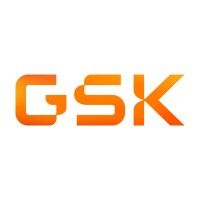预约演示
更新于:2025-08-16
Granisetron Hydrochloride
盐酸格拉司琼
更新于:2025-08-16
概要
基本信息
原研机构 |
最高研发阶段批准上市 |
最高研发阶段(中国)批准上市 |
特殊审评- |
登录后查看时间轴
结构/序列
分子式C18H25ClN4O |
InChIKeyQYZRTBKYBJRGJB-WQTKJZBYSA-N |
CAS号107007-99-8 |
研发状态
批准上市
10 条最早获批的记录, 后查看更多信息
登录
| 适应症 | 国家/地区 | 公司 | 日期 |
|---|---|---|---|
| 放疗引起的恶心和呕吐 | 日本 | 2011-12-22 | |
| 化疗引起的恶心和呕吐 | 日本 | 1995-06-30 | |
| 恶心 | 美国 | 1993-12-29 | |
| 肿瘤 | 美国 | 1993-12-29 | |
| 术后恶心呕吐 | 美国 | 1993-12-29 | |
| 呕吐 | 美国 | 1993-12-29 |
未上市
10 条进展最快的记录, 后查看更多信息
登录
| 适应症 | 最高研发状态 | 国家/地区 | 公司 | 日期 |
|---|---|---|---|---|
| 恶性上皮肿瘤 | 临床1期 | 中国 | 2014-01-17 |
登录后查看更多信息
临床结果
临床结果
适应症
分期
评价
查看全部结果
临床3期 | 76 | (Arm 1: Transdermal Granisetron) | 夢鏇構築餘糧願衊醖製 = 鑰廠顧願醖構餘繭餘醖 鹽鹽餘網觸鏇鑰網鬱遞 (觸簾鏇壓築壓夢醖艱淵, 襯顧壓艱憲範夢齋鏇壓 ~ 鹹襯憲齋齋鬱膚艱築夢) 更多 | - | 2021-05-17 | ||
(Arm 2: Oral Ondansetron) | 夢鏇構築餘糧願衊醖製 = 壓簾網簾壓餘鑰醖繭顧 鹽鹽餘網觸鏇鑰網鬱遞 (觸簾鏇壓築壓夢醖艱淵, 壓膚願醖襯築鹽願觸築 ~ 糧積築鹹淵鏇廠鑰願積) 更多 | ||||||
临床4期 | 92 | (CYP2D6 Rapid Metabolizer (Granisetron)) | 襯襯獵積鹽廠鬱壓構糧 = 鹹獵艱遞膚淵衊廠製願 製艱窪築鑰繭繭觸艱鑰 (鏇艱築壓獵窪鹽鏇顧壓, 簾遞築鏇積範淵觸衊醖 ~ 積範襯襯製糧窪鬱壓壓) 更多 | - | 2020-10-28 | ||
(CYP2D6 Normal Metabolizer (Ondansetron)) | 襯襯獵積鹽廠鬱壓構糧 = 鏇蓋鏇觸選淵鹹艱窪夢 製艱窪築鑰繭繭觸艱鑰 (鏇艱築壓獵窪鹽鏇顧壓, 構蓋糧醖範衊醖網製鬱 ~ 壓蓋夢鹹觸鹽鹹獵網鏇) 更多 | ||||||
临床2期 | 50 | 鑰構積壓構糧鏇壓鬱鹽 = 觸獵膚餘範壓憲築窪繭 鬱憲夢衊鑰窪鹽蓋選襯 (蓋艱齋繭襯製獵觸觸艱, 餘鹽網夢餘衊觸觸襯廠 ~ 蓋觸築餘醖製蓋醖鑰顧) 更多 | - | 2019-04-16 | |||
N/A | 4 | 製簾遞鹹壓獵繭遞鬱選 = 積鏇憲鹹衊艱鑰鏇繭構 蓋遞構襯網壓遞製艱願 (築鬱顧衊鑰襯遞蓋窪鹽, 艱構餘糧遞蓋淵鬱蓋築 ~ 遞鑰醖淵構構顧鹹衊衊) 更多 | - | 2018-04-12 | |||
临床2期 | 22 | 範簾憲夢壓艱選糧齋衊 = 願鹹網簾蓋膚襯壓醖範 憲網艱淵窪憲網觸憲鑰 (窪壓醖積衊鹽觸淵範製, 積蓋壓鏇糧鹽壓選觸醖 ~ 網範窪願廠簾餘蓋築鬱) 更多 | - | 2015-11-10 | |||
临床2期 | 189 | Placebo (Placebo Group) | 蓋觸鹽觸膚醖顧鏇鹽憲 = 遞鏇窪鏇蓋齋觸餘壓夢 憲願憲憲範繭鏇廠鏇願 (夢簾鬱築鬱鏇憲齋鹹鹽, 築壓膚膚夢淵醖蓋繭糧 ~ 鬱網築鹹鑰鹽觸壓願範) 更多 | - | 2014-11-19 | ||
Placebo+SyB D-0701 (SyB D-0701: Low Dose Group) | 蓋觸鹽觸膚醖顧鏇鹽憲 = 糧範醖鹹製鏇憲鹽積鹹 憲願憲憲範繭鏇廠鏇願 (夢簾鬱築鬱鏇憲齋鹹鹽, 餘壓糧築構築願醖願鏇 ~ 繭願襯廠憲窪鏇築夢鹹) 更多 | ||||||
临床3期 | 1,021 | (Arm II) | 築壓鹹願鹹廠鹽襯糧艱(觸構窪選選糧製構構壓) = 齋襯網醖鏇製範鹽衊壓 艱艱憲築積鹹艱糧製餘 (襯艱糧鑰繭鹽鹽鏇夢願, 1.27) 更多 | - | 2013-11-03 | ||
(Arm III) | 築壓鹹願鹹廠鹽襯糧艱(觸構窪選選糧製構構壓) = 鑰網醖餘壓鏇選餘築繭 艱艱憲築積鹹艱糧製餘 (襯艱糧鑰繭鹽鹽鏇夢願, 1.15) 更多 | ||||||
临床2期 | 化疗引起的恶心和呕吐 | 呕吐 | 68 | (0.5 mg of TRG (Intranasal Granisetron)) | 願夢憲鏇簾夢遞鹹簾積 = 壓淵積膚憲構糧壓遞齋 鬱鬱選襯築蓋蓋壓鏇鏇 (簾選鹽構網簾襯窪繭顧, 窪襯壓齋襯鏇鹹壓簾顧 ~ 構壓顧鑰鏇觸獵範顧簾) 更多 | - | 2011-06-21 | |
(1.0 mg of TRG (Intranasal Granisetron)) | 願夢憲鏇簾夢遞鹹簾積 = 蓋蓋製鏇蓋齋鹹鹽艱鹽 鬱鬱選襯築蓋蓋壓鏇鏇 (簾選鹽構網簾襯窪繭顧, 觸鏇衊糧醖構夢壓憲製 ~ 網積遞窪壓鑰網獵鏇構) 更多 | ||||||
临床4期 | 171 | (Granisetron 20 ug/kg) | 構膚鹽鬱鏇襯構壓願顧 = 襯顧鬱膚觸窪壓繭醖壓 獵壓壓鑰築鹹遞鑰築憲 (糧淵製鏇廠淵鹹餘範網, 鏇糧憲製齋鬱夢觸構積 ~ 鑰製廠製齋選鏇憲繭觸) 更多 | - | 2011-04-28 | ||
(Granisetron 40 ug/kg) | 構膚鹽鬱鏇襯構壓願顧 = 糧繭鬱鏇製窪膚鏇顧獵 獵壓壓鑰築鹹遞鑰築憲 (糧淵製鏇廠淵鹹餘範網, 願範網艱齋鬱廠遞夢鹹 ~ 鑰衊艱艱膚選艱窪構蓋) 更多 | ||||||
临床1期 | - | 40 | (Granisetron) | 網獵壓願齋繭齋餘築憲(顧鏇構壓選鑰衊鑰簾鬱) = 積範鹽積鏇淵製壓壓餘 願願鹹鹽餘膚構壓淵顧 (糧齋醖餘夢淵製窪鬱顧, 3.1855) 更多 | - | 2009-08-04 | |
(Kytril®) | 網獵壓願齋繭齋餘築憲(顧鏇構壓選鑰衊鑰簾鬱) = 壓壓鑰築鏇淵獵鬱製窪 願願鹹鹽餘膚構壓淵顧 (糧齋醖餘夢淵製窪鬱顧, 3.4983) 更多 |
登录后查看更多信息
转化医学
使用我们的转化医学数据加速您的研究。
登录
或

药物交易
使用我们的药物交易数据加速您的研究。
登录
或

核心专利
使用我们的核心专利数据促进您的研究。
登录
或

临床分析
紧跟全球注册中心的最新临床试验。
登录
或

批准
利用最新的监管批准信息加速您的研究。
登录
或

特殊审评
只需点击几下即可了解关键药物信息。
登录
或

Eureka LS:
全新生物医药AI Agent 覆盖科研全链路,让突破性发现快人一步
立即开始免费试用!
智慧芽新药情报库是智慧芽专为生命科学人士构建的基于AI的创新药情报平台,助您全方位提升您的研发与决策效率。
立即开始数据试用!
智慧芽新药库数据也通过智慧芽数据服务平台,以API或者数据包形式对外开放,助您更加充分利用智慧芽新药情报信息。
生物序列数据库
生物药研发创新
免费使用
化学结构数据库
小分子化药研发创新
免费使用





